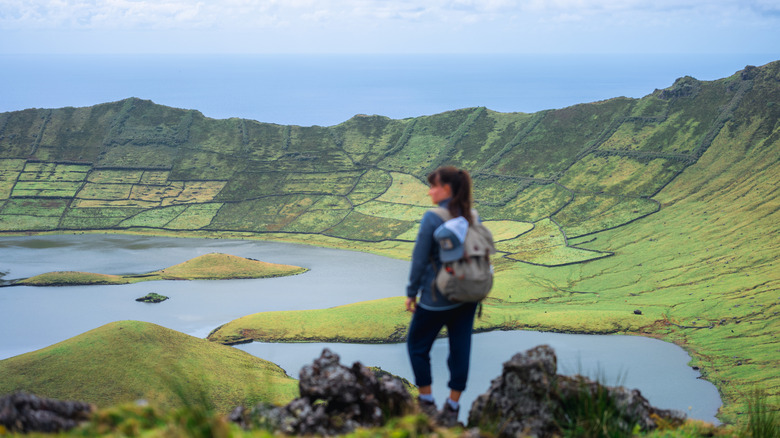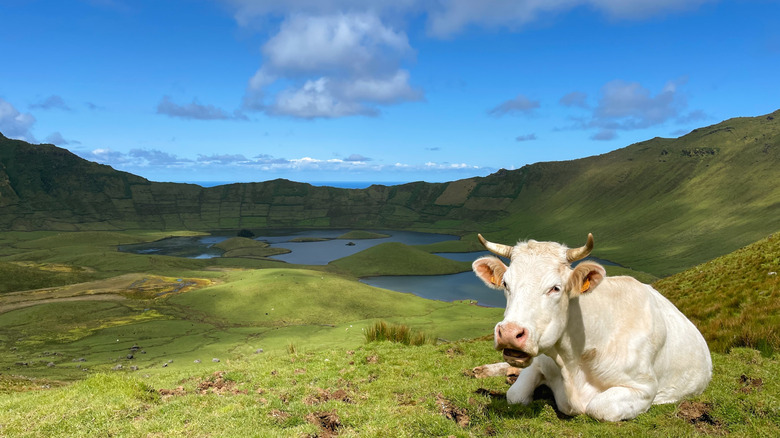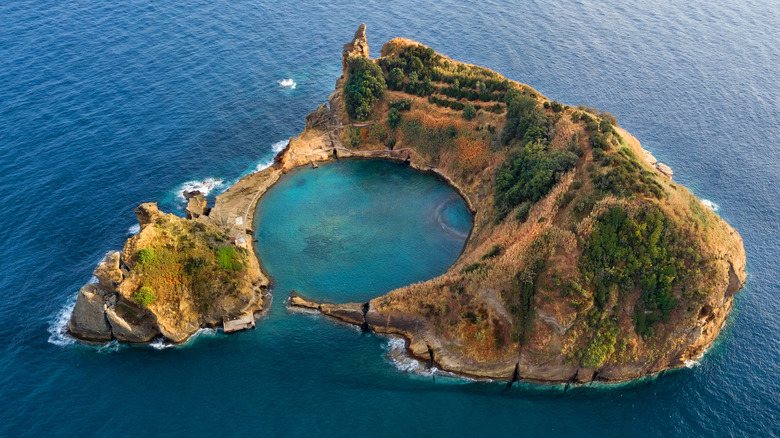
Portugal is renowned for its stunning scenery and gorgeous seaside towns along picturesque coastlines dotted with spectacular beaches
. Full of unique locales, any traveler could get lost in the country's plethora of ancient ruins, modern cities, and even far-flung wineries and vineyards for weeks. However, Portugal is more than just a mainland destination. Home to over 102 islands, including the mesmerizing Azores, Portugal is also an isle-hopper's paradise.Located in the Atlantic Ocean, far from
the coast of Portugal in a group of volcanic archipelagos known as Macaronesia, Corvo is the smallest island of the Azores archipelago at just 6.8 square miles. It is also the northernmost island of the chain and the most remote island in Europe. Inhabited by just a few hundred people who live in one isolated settlement, Vila Nova de Corvo, Corvo is the perfect location for any traveler seeking an escape from the crowded attractions of mainland Portugal. Carved from millennia-old volcanic rock, Corvo's landscape is replete with lush fields, mossy peatlands, and a surreal lake-filled volcanic crater. Reminiscent of the hills, cliffs, and lava flows that formed Hawaii's lush and tropical landscape, Corvo is truly a European destination like no other.
Most frequently visited as a day trip from neighboring Flores, Corvo is accessible via ferry and airplane when the weather and time of year permit. However, there are no direct flights from mainland Portugal to Corvo or Flores, so you'll need to fly to the bigger Azorean islands (São Miguel or Terceira) and then hop on a local flight to either island. Also know that there are very few accommodations on Corvo, and they are often booked months out. Their scarcity and the island's remote location make them more expensive than those in other parts of the archipelago. All these factors combine to make it imperative to plan your trip to this tiny jewel of the archipelago carefully and well in advance.
Read more: 14 Safest Caribbean Islands For A Stress-Free Vacation, According To Research
Corvo's Fascinating Natural And Human History

Once settled in Corvo, begin your journey in Vila Nova de Corvo. The town is full of historic buildings, particularly the Igreja De Nossa Senhora Dos Milagres, or Church of Our Lady of Miracles, a 16th-century Catholic church. Legend has it the church's Renaissance Flemish statue saved the town's inhabitants from a pirate siege in 1632. The church still holds weekly services, with visitors allowed to view its stained-glass windows and centuries-old statues.
Also in town is the Centro de Interpretação de Aves Selvagens do Corvo, or the Corvo Wild Birds Interpretation Center, which contains extensive information on the bird species of the island as well as on the art of birdwatching itself. One of the best birdwatching locations in all of Europe, Corvo is a base for a rich and diverse population of avian species given its prime location along critical migratory paths. In fact, birdwatching is one of the primary economic drivers for the tiny island.
Perhaps the most spectacular reason to visit Corvo, however, is the Caldeirão. Resulting from the collapse of the island's central volcano, the Caldeirão and its two lakes are surrounded by lush green pastures and wetlands — a landscape that dominates the northern part of the island. The Instagram-worthy three-mile trail that leads into and around the crater is moderately challenging. But you're likely to make a few new local friends, as you'll be sharing the trail with resident cows, goats, and horses.
Adventure, Zen, And Cetaceans Abound In The Azores

While Corvo offers a relaxing, scenic, and secluded getaway, make sure you schedule enough time to check out a few of the other nine islands of the Azores. The Azores archipelago sits at the junction of three tectonic plates, making it a hotbed for the underwater volcanic activity that would eventually form the archipelago as it sits today. Over 36 million years of ongoing eruptions created many unique geological formations across the island chain, including deep caves, cascading waterfalls, pristine beaches, subterranean lava tubes, and crater lakes, all primed for exploration.
Clearly visible from Corvo, the island of Flores is known for its evergreen landscape and rocky cliffs dotted with waterfalls and lakes, along with plenty of gorgeous ocean areas for swimming, kayaking, and just generally beating the heat. The nearby island of Pico in the Azores' central group is yet another exotic Portuguese getaway, boasting the tallest mountain in the country (also named Pico) at 7,700 feet above sea level. Climbing Pico requires a challenging eight-hour trek over its lava-carved terrain; true adventure seekers can opt to join a guided night camping excursion to sleep amongst the stars on the rocky peak.
If slow, zen-like travel is more your speed, head to one of the largest Azorean islands, São Miguel, to admire its breathtaking blue and green volcanic crater lakes and soak in its relaxing thermal springs, like the dreamy Poça da Dona Beija in the town of Furnas. Other popular activities in the archipelago include sunbathing, swimming, and snorkeling at the many sublime beaches scattered throughout the islands, like the beautiful Praia dos Mosteiros on São Miguel. One of the world's largest protected areas for whales, the waters around the archipelago are home to 28 species of whales and dolphins, including sperm whales, blue whales, minke whales, humpback whales, orcas, and others, many of whom use the area as a breeding ground. So be sure to incorporate a whale-watching trip into your Azorean adventure or a highly rated tour that allows you to swim alongside dolphins.
Ready to discover more hidden gems and expert travel tips? Subscribe to our free newsletter for access to the world's best-kept travel secrets.
Read the original article on Islands.










